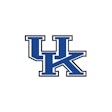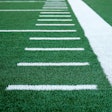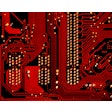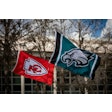Fitness club operators and their clients live in an increasingly visual world, from the streaming media on their phones to the video walls in stores, airports and public spaces, to the screens on streaming exercise bikes. Display technology has become part of the way people experience life. Studies indicate that consumers don’t always note the presence of digital signage, interactive touchscreens and other visual experiences, but they definitely notice their absence. That’s because video has become an expectation — a means of communicating, informing, entertaining and collaborating. Implemented effectively, it can also be a differentiator in the competitive fitness market.
Fitness clubs have long offered televisions for their members to watch while working out. But as companies in related industries such as retail and hospitality have been learning, display technology can serve many purposes. From networked TVs to digital signage to video walls, fitness club operators are adopting new technology to communicate better, brand themselves more effectively, drive retention of existing members, generate new revenue streams, and engage with clients in new ways. Here are some to consider: ![[Photo courtesy: LG]](https://img.athleticbusiness.com/files/base/abmedia/all/image/2020/03/ab.LGClub.png?auto=format%2Ccompress&fit=max&q=70&w=400) [Photo courtesy: LG]
[Photo courtesy: LG]
TVs that stand the test of time
More fitness clubs are upping their TV game, not only by installing newer, bigger displays, but also by choosing commercial-grade products. Unlike consumer-grade TVs available at big box stores, commercial TVs are built for extended use in public environments. They are designed to withstand excessive dust or humidity, eliminate glare so they can be seen clearly from different spots in a club and support advanced features that make them easier to keep running in facilities where there are many screens to manage.
For all these reasons commercial-grade displays are seeing significant growth in the fitness space. Snap Fitness now advocates 55- and 65-inch commercial TVs for all of its franchises, while Anytime Fitness has started specifying commercial-grade TVs as part of its standard technology package for new locations. In clubs like these with lots of TVs, integrated software exists to link them all together and allow an operator to manage power, channel selection, messaging, and more from a central location, rather than walk around with multiple remote controls.![[Photo courtesy: LG]](https://img.athleticbusiness.com/files/base/abmedia/all/image/2020/03/ab.LGCycle.png?auto=format%2Ccompress&fit=max&q=70&w=400) [Photo courtesy: LG]
[Photo courtesy: LG]
Bright, eye-catching signage
Beyond entertaining clients, commercial display technology is especially effective in digital signage networks throughout clubs. Digital signage displays have built-in intelligence that make them more than just screens. Whether they’re used as menu boards at a juice bar or flipped vertically to show the day’s schedule and upcoming events, digital signage displays yield a positive return on investment. Because the content is digital, it can be changed quickly, easily and often. Digital signage can also be used as a source of a new revenue stream for advertising space – whether that’s a new fitness drink, a local business, or beyond.
Signage can also be highly targeted, so digital signs near the front desk offer one message and screens in retail areas, locker rooms, and elsewhere offer another, context-specific message.
In addition to menus boards and informational displays, digital signage can be an effective wayfinding tool. Depending on the size or layout of a fitness club, screens offer a prominent method of directing clients to different areas of a club, specific equipment, studios, or even lifestyle stores in the neighborhood where guests can pick up related products. Because digital signs can be altered so easily, when a club’s layout changes, its wayfinding signage does, too.
And display technology for digital signage varies greatly based on the application. For example, clubs with large, exterior-facing windows can cover them with transparent displays that include bright LED technology. Transparent LED still lets in light and shows people outside what the club offers, but it also allows clubs to deliver bright, colorful branding that attracts customers.
Guest navigation with touch displays
Wayfinding is especially effective when guests can navigate information on a digital sign with their fingers, just as they would on their smartphones. For example, tapping a location on a digital map could bring up details about the fitness equipment offered in that area, or the classes being held in a studio. In large facilities, touching a location could generate visual directions that guide the guest along the quickest path.
Large and small touch displays are also effective in reception areas for self-check-in or scheduling, freeing up staff to do other jobs around a club. Clubs also use them for sharing information about their offerings. Guests tap a caption of picture and can read about a class or see a video example. Some advanced digital signage displays can even sense an approaching guest and show targeted messages of other content, creating a connection with clients, fostering engagement, and driving guest retention.
Immersing guests with videowall displays
Fitness clubs are increasingly incorporating video walls for a more-immersive experience. The new generation of video wall LCD screens have very slim bezels (virtually no border) so they can be combined in a variety of configurations such as 2x3 or 2x4.
And now Direct-view LED technology is emerging as very effective indoor video wall signage as well. Made up of tiny individual lights and famous for outdoor experiences like New York’s Times Square, DVLED screens have evolved to support a variety of impactful video experiences. DVLED panels are modular and can be put together to create large canvasses or atypically shaped screens, allowing studio designers to create digital experiences that differentiate a space or a club. And because current DVLED technology is bright — with increasingly dense pixels — it can be used in sunlit areas and present content that clients can view clearly from relatively close up.
Large, indoor DVLED screens — as well as tiled, traditional displays — create video walls that serve multiple purposes. Some clubs use them for branding and entertainment. Content can take over an entire video wall, or the wall can be designed to pull in different video feeds displayed in different sections of the wall.
Video walls also support group fitness. Instructors can be displayed live or via recording to an entire room of workout clients. The life-size scale of a video wall makes it feel like everyone is in the same room. If a club employs an all-star instructor, video walls and related streaming technology make it so clients at various studios can attend a class by the same instructor at the same time, captured by video in one location and streamed to video walls in many other locations. Even if the instructor is live and in-person, a video wall can provide an engaging, motivating backdrop.
Ultimately, fitness club designers can weave display technology into their spaces as much or as little as they choose. A truly integrated digital experience even includes the displays built into exercise equipment. Octane Fitness has plans to incorporate new displays into their new elliptical machines. With new technology becoming available, displays in cardio equipment are becoming bigger (22- to 32-inch screens, instead of the usual 10 to 15 inches), more interactive (with touch interfaces), and better tied into clubs’ other video platforms (as well as guests’ personal fitness apps).
As the success of live streaming fitness has demonstrated, the industry is completely compatible with digital experiences. And as more fitness clubs adopt the technologies to create those experiences, they give guests more reason to spend even more time in their gyms and studios.
Jake Benner, is director of Hospitality, Cruise & Fitness, LG Business Solutions USA.




































